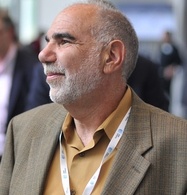
Looking at the changes that the TV market is going through in the past five years one can pinpoint a few major trends: cord cutting and the shift to OTT solutions (in many variations of the two); the shift to 4K and Ultra HD quality content and TV sets, smart TVs and connectivity between devices, and the emerging dominance of personalized TV solutions.
All these changes, especially in the US market, are evolutionary: they gradually evolve from one year to the next, between one show and the other. And when it comes to the advertising market, when you look at how advertising is bought and sold in this changing ecosystem – the evolutionary aspect is particularly true.
Traditionally, the advertisers and the agencies that have bought TV placements on their behalf have relied heavily (and in some cases exclusively) on the ratings provided by Nielsen. This “gold standard” as it has been dubbed, was and has been, the primary metrics used by many to research and present viewership and audience. It has measured the success of programming, and allowed those seeking audience to use the “Nielsen numbers” as their method of selection.
As audience viewership patterns have shifted to connected devices, be they cable household, second screen devices and Smart TVs, the ability to more accurately tune is a given - and collecting viewership and demographic data has become a reality. However, as mentioned above, change is evolutionary- and in this particular case slow – for several reasons.
One reason is technological: the systems which are used for buying TV advertising are legacy. The technologies utilized were built in the 80s and are difficult to change and update. The ability to adapt these systems to new audience measurement technologies requires major change, if not a complete revamping. The other factor is psychological: everyone talks about using better, more accurate numbers, but many are afraid to move away from the current accepted practice of using the old system and go to new models.
Based on these reasons, my prediction for the next five years is the emergence of a new measurement model, which will integrate many different metrics. It will reflect changing viewing patterns, new demographic calculations and provide a means of creating targeted specific grouping. This will allow advertisers and agencies, creatives and programmers, to come together and pave the way to new models of TV Ad purchases.
- Lenny Melamedas, Chief Strategy Officer, M3C
Check out the complete eBook presenting 2020 predictions, and the blog post:
 About Lenny Melamedas: Lenny Melamedas is one of Cable Television’s most successful and well-respected distribution, operations, advertising & technology executives and has held senior operations positions within major cable and broadcast companies, program entities, media, advertising and software organizations. Lenny’s career has spanned both broadcast and cable operators world-wide. Most recently, he served as Executive Vice President of two major worldwide software/hardware organizations, providing solutions for advertising, networks, advertising agencies and cable operators. A publisher and author in multiple international trade journals, he has written pieces on emerging technology trends, while serving on a variety of industry boards and associations.
About Lenny Melamedas: Lenny Melamedas is one of Cable Television’s most successful and well-respected distribution, operations, advertising & technology executives and has held senior operations positions within major cable and broadcast companies, program entities, media, advertising and software organizations. Lenny’s career has spanned both broadcast and cable operators world-wide. Most recently, he served as Executive Vice President of two major worldwide software/hardware organizations, providing solutions for advertising, networks, advertising agencies and cable operators. A publisher and author in multiple international trade journals, he has written pieces on emerging technology trends, while serving on a variety of industry boards and associations.
Photo credit: avrene via Foter.com / CC BY

